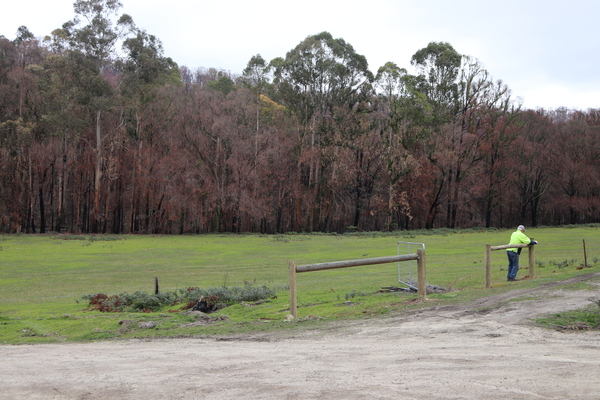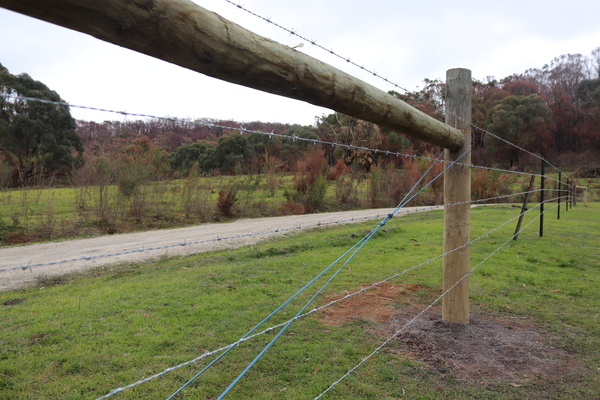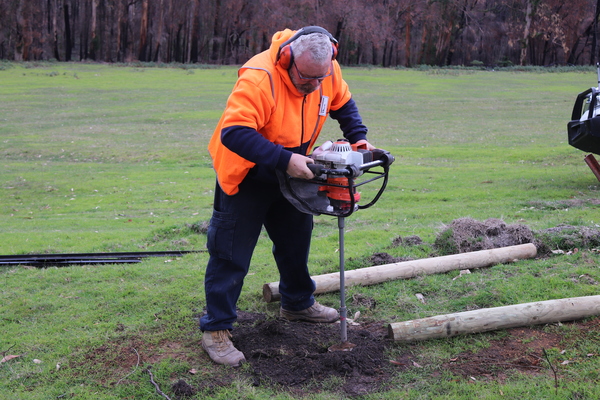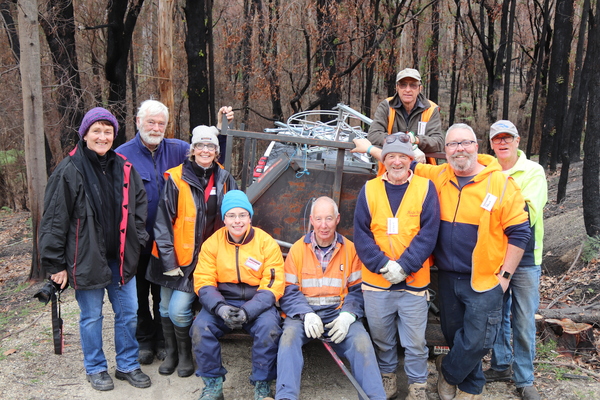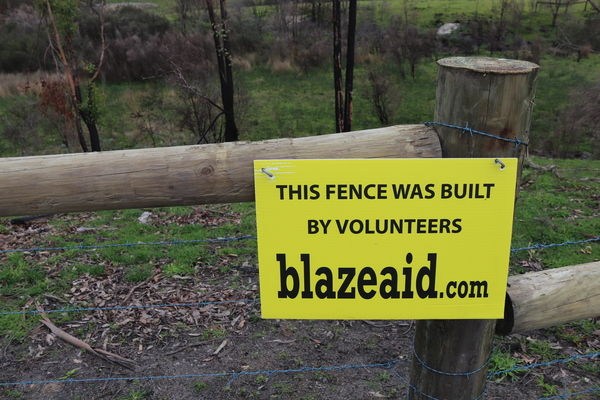The countless hours of work done under the BlazeAid banner over the past few months has left an indelible mark on the fire-affected communities around Bunyip State Park, as DANIELLE KUTCHEL discovers.
We don’t necessarily just build fences, we build relationships
Five months, completing 152 kilometres of new fences and clearing 300 kilometres of damaged fence line: in anyone’s language, that’s a lot of fences.
Confronted with such a mammoth task, it would be understandable for anyone to quake in their boots at the thought of the hard work ahead.
But BlazeAid Bunyip volunteers are a different sort, and if there was any doubt, or any nerves at all, it didn’t show.
The team swung into action quickly, straight after the fires ripped through on March 1 2019.
Volunteers arrived from all over the state: young and old, experiences and inexperienced. There were professionals, tradies and even students, all willing to lend a hand. Some stayed for the whole five-month duration of the project, while others drifted in and out as their time permitted.
The BlazeAid camp was set up at Bunyip Recreation Reserve and their work officially commenced on 12 March, led by coordinator John Anderson.
Mr Anderson says he was “dobbed in” to coordinate the task – not that he minded at all.
“I’m local, so it was a chance to put back into the community,” he explains.
It’s hard to imagine the scale of the disaster without viewing it firsthand. Residents from Tynong North, Garfield North, Bunyip North and Tonimbuk contacted the volunteer-based organisation over the weeks and months following the fires, seeking help with dismantling ruined fences and rebuilding new ones – needing the security and stability that the fences offered.
In the early days, getting into the heavily forested areas was tough as spot fires continued and weakened trees fell. While Mr Anderson said BlazeAid normally just works on farms, they found a mixture of properties needing assistance in the area and worked through all of them.
Triage was done based on the people who came into the BlazeAid camp in Bunyip.
The first task for volunteers in each case was the clear the old fence line, removing the scrap metal and burnt posts.
Then, the new fences went in. In some cases the team worked in conjunction with contractors; in others, the volunteers did the whole lot, posts and wires.
With volunteers coming in from all sorts of backgrounds there were plenty who had to learn on the job.
Volunteer Paul Knight is one of those.
“I would never have known how to put a barbed wire fence up five months ago. I learned here,” he says with a bit of a proud smile.
“The guys from BlazeAid, the volunteers and people I have worked side by side with, have been the most fantastic people to educate and help us along.”
These are the people, he adds, who have been to ten or 12 BlazeAid camps around Australia, volunteering their time in disaster areas to get communities back on their feet.
For Mr Knight though, a retail manager by trade, this was a new experience.
He spent five months away from home, enabled by a supportive family.
“They understand why I’m here – because I’m rebuilding. The outcome of this is that I’m getting something just as much as the farmers. It’s important to me,” he says.
He says it isn’t just the fences that have been rebuilt, but the fabric of the community.
Often, BlazeAid volunteers like Mr Knight deal with people who are feeling fragile after experiencing disaster.
“It’s important that I got an understanding of what they’re saying and feeling – this is a disaster situation for them and they’ve never dealt with it before.
“At the end of the day it’s important we respect that they’re dealing with that side of things and we’re caring and empathising with what’s happening around them at the time, making sure we’re supporting them by having chats with them.
“We don’t necessarily just build fences, we build relationships, so the important thing is if we sit down with the farmer and have a coffee or beer, it’s just part of rebuilding their lives because the fences are one major component of it but their own personal lives are very important,” he adds.
While the fences are the visible part of BlazeAid, behind the scenes an army made their work possible.
Three shifts of workers went out each day, and each one had to be kept fed and watered.
Breakfast, lunch and afternoon tea were coordinated by Therese Baker and Sue Nielson from Bunyip, and community groups coordinated by Sarah Johnson rotated the dinner shift between them.
Meanwhile, back office support was essential for keeping track of the properties attended and the fences that had been rebuilt as the metres, and, eventually, kilometres, added up.
Donations sustained the efforts, whether of tinned food, materials or vouchers.
Anything not used was handed over to the community at the end of BlazeAid’s time in the region, when the camp closed on Friday 16 August.
There were mixed emotions amongst the volunteers as the project came to a close, amongst them pride and even a touch of sadness, but Mr Anderson says he has no regrets at all.
“We’ve done so much. It’s good to see the cattle back in,” he says as he surveys the team’s handiwork.
Above all though, it was the relationships, the making of new friends and the rediscovering of old ones, that really characterised the team’s time out here.
Mr Knight is even considering staying in the community and building a small business that would allow him to continue the work he has done with BlazeAid.
He has relished the feeling of peace that came with each completed property.
“That warm feeling in my heart, knowing that when we finish a farm and we see the livestock back on the farm, that farmer is back in business, that to me is a million bucks,” he explains.

